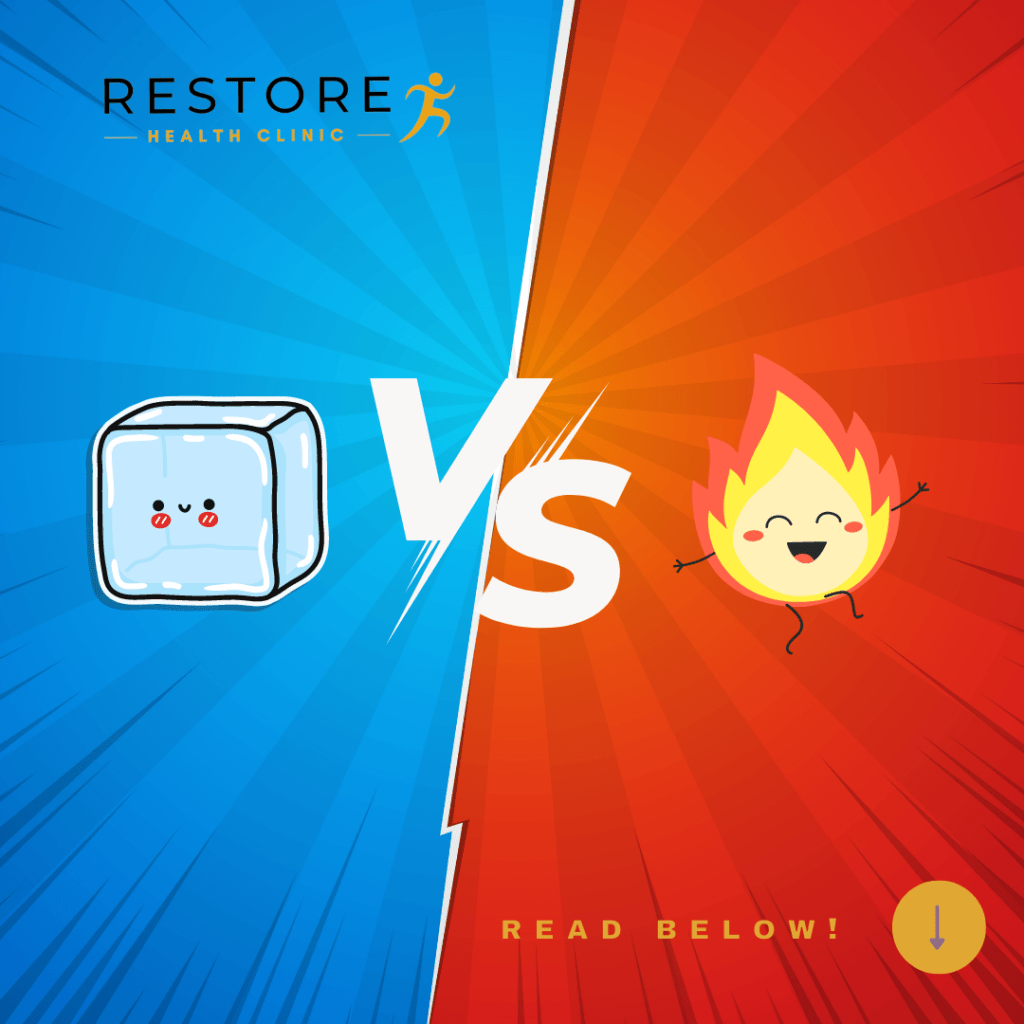Ice, heat, rest, movement – What to do with a new injury

In the realm of injury care, the choice between using ice or heat is a frequent query among those seeking guidance at our clinic. Deciding when to employ each method and understanding the optimal duration can be perplexing. Today, we delve into the intricacies of this dilemma, shedding light on the RICE protocol’s limitations and advocating for an informed approach to soft tissue injuries so that you can recover faster next time you experience one.
Assessing the Nature of the Injury:
Determining the type of injury is the first crucial step. While an absolute diagnosis may require an X-ray or expert examination, certain signs such as a cracking or popping sound, dramatic deformation of the injured area, or a complete lack of movement past the injury site may indicate a potential hard tissue (bone or cartilage) injury. In such cases, immediate immobilization and seeking medical attention are paramount.
Navigating Soft Tissue Injuries:
For soft tissue injuries such as muscle, ligament, or tendon issues,there is a few things you can do to assist the intial stages of the bodies response to the injury. Here’s a detailed step-by-step guide:
Step 1: Initial Assessment for Soft Tissue Injuries
If a hard tissue injury is ruled out due to an absence of cracking or popping sound, dramatic deformation of the injured area, or a complete lack of movement past the injury site, proceed assuming a soft tissue injury:
Step 2: RICER Protocol for the First 24-48 Hours
- Rest: Allow the injured area to rest (dont move it or use the muscles in that area).
- Ice: Apply ice in 20-minute on, 20-minute off cycles with a cloth around the ice to prevent direct skin contact.
- Compression: Employ a tight bandage or compression sock, ensuring it does not cut off circulation.(you can check this by lightly pinching a nail past the injury and seeing if the white spot turns red again)
- Elevation: Keep the injured area above the heart level during rest.
- Referral: Seek professional assistance for a proper diagnosis and to ensure the right path to recovery.
Step 3: Transitioning to Heat After 24-48 Hours
After the initial 24-48 hours, switch from ice to heat. Use wheat bags, hot water bottles, baths, or showers for effective heat application. Heat creams may be suitable for surface injuries but may not penetrate deep enough for issues like low back injuries. Gentle movement within tolerable ranges for the joint or muscle becomes beneficial at this stage. Always heed your body’s signals, avoiding pushing past your pain threshold. Discomfort is acceptable, but pain is not.
Conclusion: Seeking Further Assistance
This comprehensive guide provides a framework for managing soft tissue injuries through the initial critical phases. If you find the information overwhelming or have specific questions, feel free to respond to this email or ask on our social media pages. Alternatively, our clinic is always open to providing assistance at any stage of your injury. We’re here to guide you through a successful recovery.

